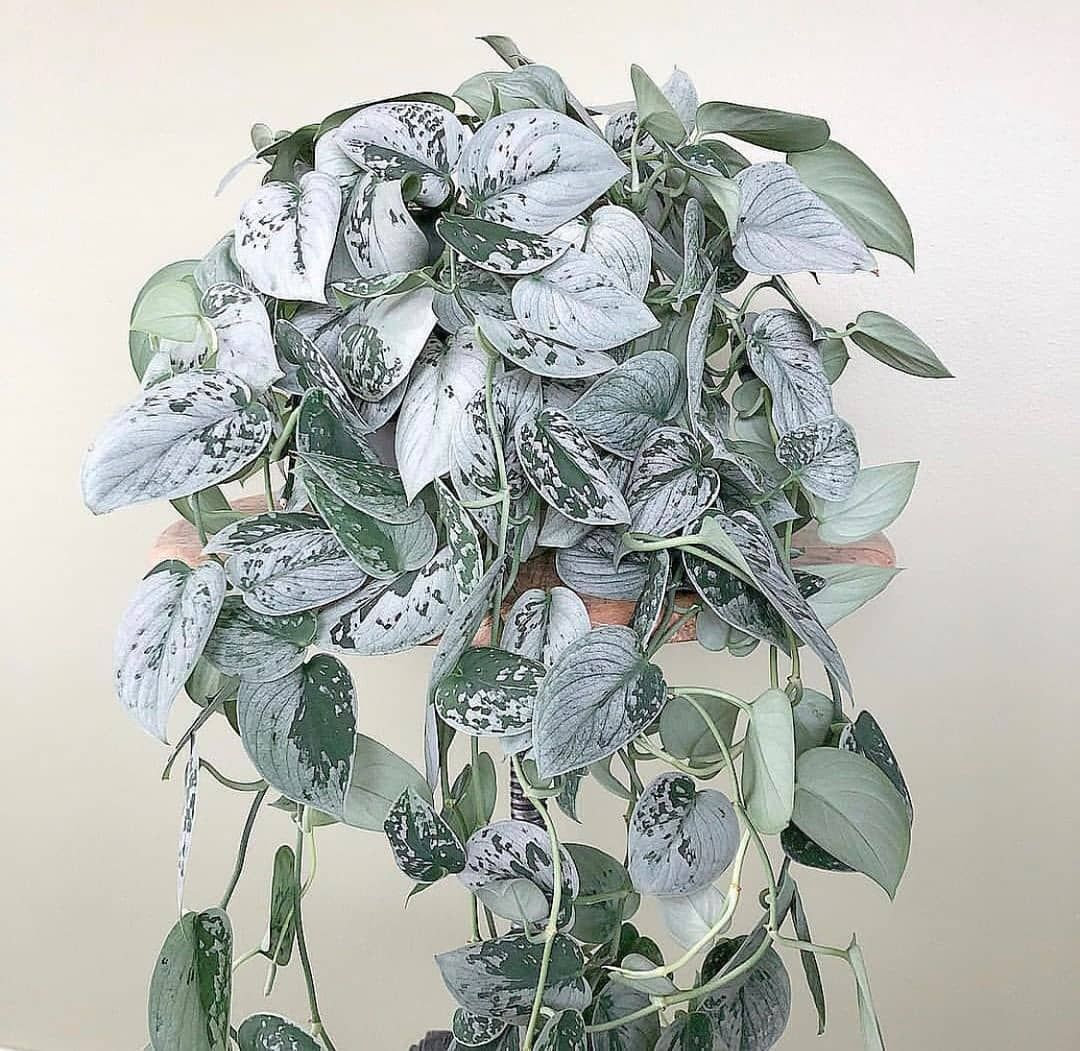The Silver Exotica Pothos (Scindapsus pictus ‘Exotica’) is a stunning variety of pothos with large, heart-shaped leaves that have a striking silvery variegation. It’s a low-maintenance, easy-to-care-for houseplant that thrives in a variety of conditions. Here’s a comprehensive care guide for your Silver Exotica Pothos:
1. Light Requirements:
- Ideal Light: Prefers bright, indirect light. The more light it gets, the more pronounced the silver markings on the leaves will be.
- Low Light: Can tolerate low light but will grow more slowly, and the silver variegation may fade or disappear in very low light.
- Avoid Direct Sunlight: Too much direct sunlight can scorch the leaves, leading to brown spots.
2. Watering:
- Watering Schedule: Water when the top 1–2 inches of soil feel dry to the touch. Overwatering can lead to root rot, so it’s important to let the soil dry out between waterings.
- Drainage: Ensure your pot has proper drainage to avoid waterlogging.
- Humidity: While it can tolerate regular humidity levels, the plant thrives in moderate to high humidity. If the air is very dry, consider using a humidifier or placing the plant on a tray with pebbles and water to increase moisture around the leaves.
3. Soil:
- Soil Type: Prefers a well-draining potting mix that is rich in organic matter. An aroid mix (potting mix with added perlite or orchid bark) is ideal.
- pH: Neutral to slightly acidic soil (pH 6.0–7.0).
4. Temperature:
- Ideal Temperature: This pothos thrives in temperatures between 60–85°F (16–29°C).
- Avoid Cold Drafts: Do not place it in areas with cold drafts, as it can be sensitive to temperatures below 50°F (10°C).
5. Fertilizing:
- Fertilizer Type: Feed with a balanced, water-soluble fertilizer (e.g., 20-20-20) during the growing season (spring and summer). You can reduce or stop fertilizing during the fall and winter when the plant’s growth slows down.
- Frequency: Fertilize once a month during the active growing season, and once every 6–8 weeks during the dormant months.
6. Pruning:
- Pruning to Maintain Shape: Trim any leggy or overgrown stems to encourage fuller growth. Cutting just above a leaf node will also help stimulate new growth.
- Removing Yellow or Damaged Leaves: Remove any yellowing, brown, or damaged leaves to maintain the plant’s appearance and health.
7. Propagation:
- Stem Cuttings: The Silver Exotica Pothos is easy to propagate through stem cuttings. Simply cut a healthy stem with at least one leaf and a node, and place it in water or soil. Once the roots develop (in a few weeks), you can transplant it into a new pot.
- Best Time to Propagate: Spring and summer are the best times for propagation, as the plant is in its active growing phase.
8. Repotting:
- Frequency: Repot every 1–2 years or when the roots have outgrown their pot.
- Pot Size: Choose a pot that is 1-2 inches larger in diameter than the current one.
- Timing: Repotting is best done during the spring or early summer, when the plant is actively growing.
9. Common Problems:
- Yellowing Leaves: If the leaves start turning yellow, it could be a sign of overwatering, poor drainage, or low light.
- Brown Tips: Brown tips often indicate low humidity or underwatering. Increase humidity or adjust watering frequency.
- Pests: The Silver Exotica Pothos can occasionally attract pests like spider mites, mealybugs, or aphids. Check the leaves regularly and treat with insecticidal soap or neem oil if necessary.
10. Toxicity:
- Toxic to Pets: Like most pothos, the Silver Exotica Pothos is toxic to cats and dogs if ingested, so keep it out of reach of pets.
11. General Tips:
- Support for Vining Growth: This pothos can be trained to climb or allowed to trail. If you want it to climb, consider providing a moss pole or trellis for support.
- Slow Grower Indoors: While pothos can grow quickly in ideal conditions, the Silver Exotica tends to grow a bit more slowly compared to other pothos varieties. Patience is key!

